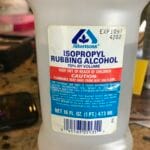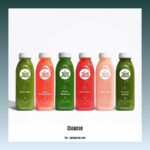This article delves into the ABV secrets behind the iconic American lager, Pabst Blue Ribbon. We’ll explore its history, compare it to its rivals, and reveal the significance of its alcohol content.
Unmasking the ABV of Pabst Blue Ribbon
Pabst Blue Ribbon (PBR), despite its “easy-drinking” image, has an alcohol content of 4.74% ABV. This places it squarely within the American-Style Lager category and aligns with the Beer Judge Certification Program (BJCP) standards for this style.
For those seeking a bolder experience, PBR Extra boasts a higher ABV of 6.5%.
While PBR might be light on the wallet, it comes in at 144 calories per 12-ounce can.
Did You Know? PBR’s alcohol content has remained remarkably consistent since its creation in 1844. This dedication to its original formula has contributed to its enduring appeal.
Is Pabst Blue Ribbon Really a “Strong” Beer?
PBR’s reputation as a “strong” beer is likely a misconception. Its 4.74% ABV is actually lower than the average for many beers.
Several factors might contribute to this perception:
- Packaging: PBR is often sold in large cans and bottles, potentially leading to an assumption of higher alcohol content.
- Affordability: Its budget-friendly price might lead some to believe it’s a quick way to get intoxicated.
- Marketing: While not explicitly promoting high alcohol content, PBR’s marketing has cultivated an image that some might associate with strength.
In reality, PBR is best appreciated for its straightforward, refreshing taste and its ability to satisfy without breaking the bank.
PBR: Deciphering Its “Cheap Beer” Status
PBR has solidified its reputation as a go-to choice for budget-conscious beer drinkers. But does it truly live up to this “cheap beer” title?
Factors to Consider:
- Price Point: PBR consistently ranks among the more affordable beers on the market.
- Alcohol Content: At 4.74% ABV, it delivers a standard beer experience without an exorbitant price tag.
- Brand Loyalty: PBR has cultivated a loyal following, drawn to its combination of affordability, history, and consistent flavor.
Unveiling the Beers with the Highest Alcohol Content
While PBR Extra offers a higher ABV option within the brand, the world of beer is brimming with brews boasting significantly higher alcohol content.
- Craft Beer Exploration: Craft breweries are known for pushing boundaries, often producing beers with higher ABV levels. These can include styles like barley wines, imperial stouts, and experimental brews.
- The Reigning Champion: Brewmeister Snake Venom, a Scottish beer, currently holds the title for the highest alcohol content at a staggering 67.5% ABV.
Remember: Responsible consumption is crucial, especially when exploring beers with high ABV.
Calorie Content in a 12 oz Can of Pabst Blue Ribbon
For the calorie-conscious beer enthusiast, a 12-ounce can of Pabst Blue Ribbon contains 144 calories. This is comparable to other popular American lagers.
Calorie Comparison:
- Budweiser: 145 calories
- Michelob Ultra: 95 calories
- Natural Light: 90 calories
Important Considerations:
- PBR does not publicly disclose its sugar content. However, the brewing process typically converts most sugars to alcohol, resulting in 12.8 grams of carbohydrates per serving.
- PBR is vegan-friendly.
- PBR is not gluten-free due to the presence of malted barley.
Key Points to Remember:
- PBR’s Alcohol Content:
- Standard PBR: 4.74% ABV
- PBR Extra: 6.5% ABV
- Calories: 144 calories per 12-ounce can
- Consistent ABV: PBR has maintained a consistent alcohol content since 1844.
- Misconceptions: PBR’s affordability and marketing may lead to an overestimation of its alcohol content.
- Blind Taste Tests: PBR often performs well against pricier beers with similar ABV in blind taste tests.
- In the compelling memoir “Tears of a Clown,” the legendary Smokey Robinson pens an emotional rollercoaster of a tale that mirrors his iconic song of heartbreak. Experience the depth of his pain Tears of a Clown Smokey Robinson.
- The iconic animated character, Taz, burst onto the scene with a boisterous and memorable What was the theme song title for Tazz that perfectly captured his whirlwind nature.
- In a poignant and insightful piece, the New York Times explores the topic of color loss, its implications for artistic expression, and the broader cultural significance of this phenomenon. Delve into the nuances of Loses color NYT.
- Georgia Platform: A Southern Strategy, 1850s - March 31, 2025
- How many weeks is 40 days: Quick Conversion Guide for Accurate Results - March 31, 2025
- How many feet is 300 meters? 984 Feet: Understand Length Conversions Easily - March 31, 2025
















